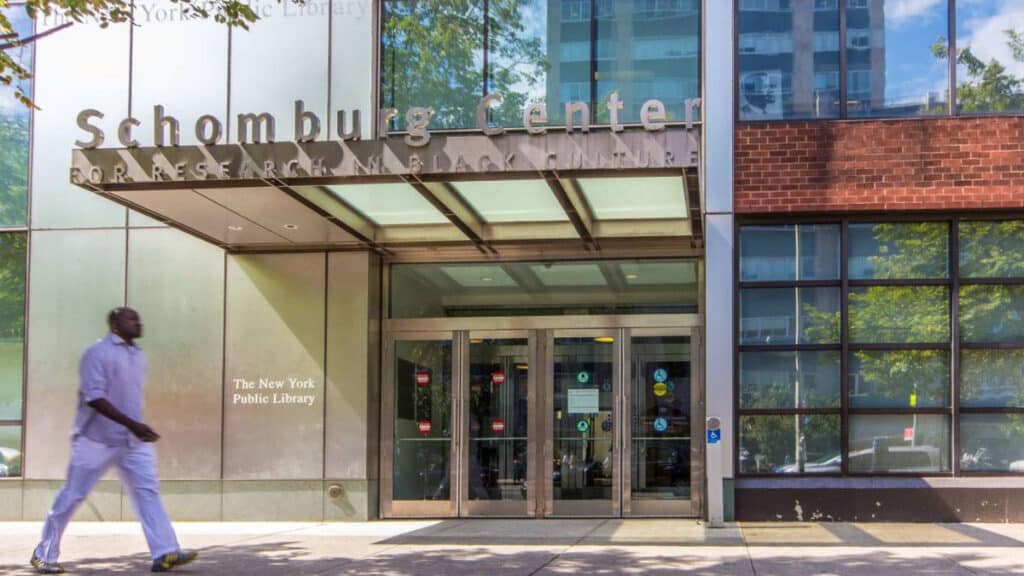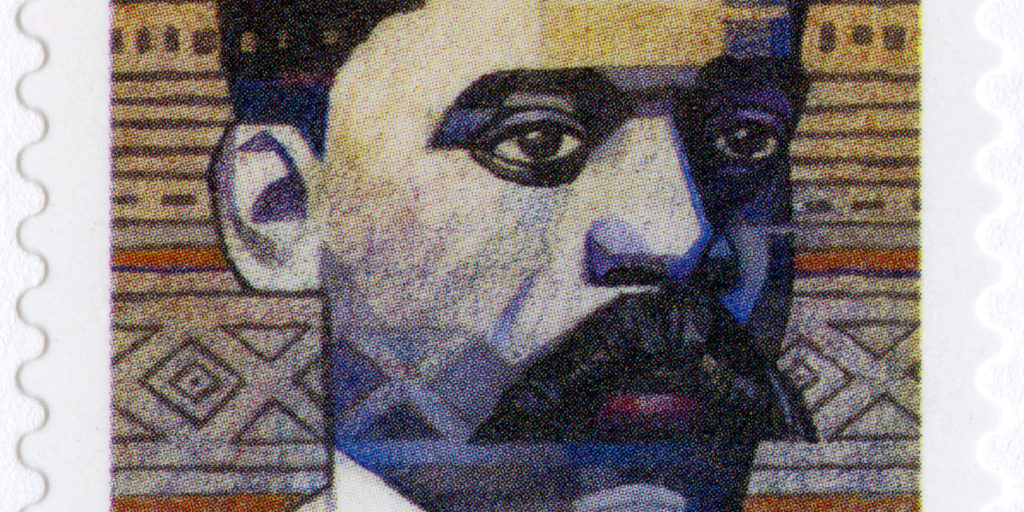
The Schomburg Center for Research in Black Culture is a New York Public Library research library with a Black Arts focus. It was founded on the personal Black Arts collection that Puerto Rican scholar Arturo Alfonso Schomburg built during the Harlem Renaissance. 🇵🇷 🇺🇸
Latin Culture at Schomburg Center
NOVEMBER
Open House
The Schomburg Center Open House themed “Schomburg Mixtape” features talks, curator-led presentations, workshops, and closes with screenings of “Beat Street” (1984) and “Black Girls Play” (2023); at the Schomburg Center for Research in Black Culture, in Harlem, Manhattan; on Saturday, November 4, 2024, from 11:30am – 6pm. 🇺🇸
Women’s Jazz
Melvis Santa joins Liany Mateo for jazz at the Schomburg Center for Research in Black Culture in Harlem, Manhattan; on Sunday, November 10, 2024. 🇨🇺
AUGUST

Afro-Mexican Photography
Visibility & Resistance, an exhibition of newly acquired Afro-Mexican photography by Hugo Arellanes of Costa Chica Guerrero State, Toumani Camara a Senegalese Mexican of Mexico City, and Koral Carballo and Dolores Medel of Veracruz; is at the Schomburg Center for Research in Black Culture in Harlem, Manhattan; from August 9 – December 2, 2024. FREE. 🇲🇽 🇸🇳
Love this image because it speaks volumes about who we are. Mexico is a mostly Indigenous country with its own African Diaspora from Veracruz, Mexico’s Caribbean gateway. Most Mexicans have an “African grandmother in the closet” (Henry Louis Gates, Jr.). The figure could be Indigenous, African, Mexican, or Afro-Mexican. They are neither masculine nor feminine, which corresponds to the Supreme God in many Indigenous and African religious traditions. The bougainvillea flowers are native to Central and South America. The indigo blue represents Mother Afrika. The blue is on the figure’s back, because that is our heritage. The figure looks into the bougainvillea because this is where we are now.
JUNE
African American Literary Festival
The Schomburg Center Literary Festival features book talks and workshops, a local marketplace, mobile library, Black Zine Fair, and entertainment for all ages; at the Schomburg Center in Harlem, Manhattan; on Saturday, June 15, 2024, from 11am to 6pm. FREE. schomburgcenterlitfest.org 🇺🇸
Donovan X. Ramsey delivers the keynote on the Art of Black Storytelling. Featured writers include:
- Diane Richardson is Executive Director of the Harlem Writers Guild. theharlemwritersguild.org
- Elizabeth Acevedo, the Dominican best-selling, National Book Award-winning author. acevedowrites.com 🇩🇴
- B. Michael is a CFDA fashion designer and author who is very conscious of our responsibilities to the next generation. @bmichaelamerica
- Jonell Joshua a Brooklyn writer/illusrator. jonelljoshua.com @jonell.joshua
- The Moth is a storytelling collective. themoth.org
Remember the old saying from the times when African Americans were not allowed to learn to read. “Each One, Teach One.”
APRIL

African American Comic Book Festival
The 12th Black Comic Book Festival 2024, the SchomCom, is at the Schomburg Center for Research in Black Culture in Harlem, Manhattan; on Friday-Saturday, April 26-27, 2024, from 10am – 7pm. The Cosplay Showcase is Saturday from 1-5pm. FREE with rsvp. schomcom.org 🇺🇸
MARCH
The Schomburg Women’s Jazz Festival is usually in March.
Schomburg Center Tickets
Many events are free and open to the public.
Schomburg Center
515 Malcolm X Blvd (Lenox Ave/Sixth Ave)
(between 135th and 136th St)
Harlem, Manhattan
About The Schomburg Center For Research in Black Culture

Arturo Schomburg was born in Santurce, San Juan, Puerto Rico in 1874. A grade school teacher told him that Black people have no history, heroes or accomplishments. That ignorant nonsense from another era inspired the young man to prove his teacher wrong. He became a commercial printer and began to study Black literature.
Schomburg moved to New York in 1891, continued his research, and began collecting and writing. He joined some of the first scholarly organizations for people of color. Schomburg became one of the scholars of the Harlem Renaissance (1918 to mid-1930s).
The New York Public Library purchased the Schomburg collection in 1926, made him its founding curator and renamed the 135th St Branch Library after him. He died in 1938 and is buried at Cypress Hills Cemetery in Brooklyn.
Not many people get libraries named after them, and certainly no uncultured ones. Mr. Schomburg proved that old teacher wrong. Some people say mean things just to make you upset so you can’t progress. Instead of doing your thing, you start spinning in an identity crisis. It’s the colonizer’s game, but don’t play it. Go to the library and develop yourself.
Today we all follow in the footsteps of people like Mr. Schomburg who refused to be put down and held back. He is a great Puerto Rican, a great African American, a great New Yorker, but really just a great American, an inspiration for all generations.
You are a collector like Mr. Schomburg.”
Schomburg Center publicist describing New York Latin Culture Magazine Editor, Keith Widyolar
[Editor Keith: Thank you! I didn’t start out looking for Black Culture, but my search for the roots of Latin culture led me into it. Most of the roots of both Latin culture and American culture of the United States are in the African Diaspora. We just weren’t taught that in school. Black culture is also the most fun, because it’s all about community. I’m a success today because my mother taught me to love reading in the library, and my father taught me to respect everyone.]
